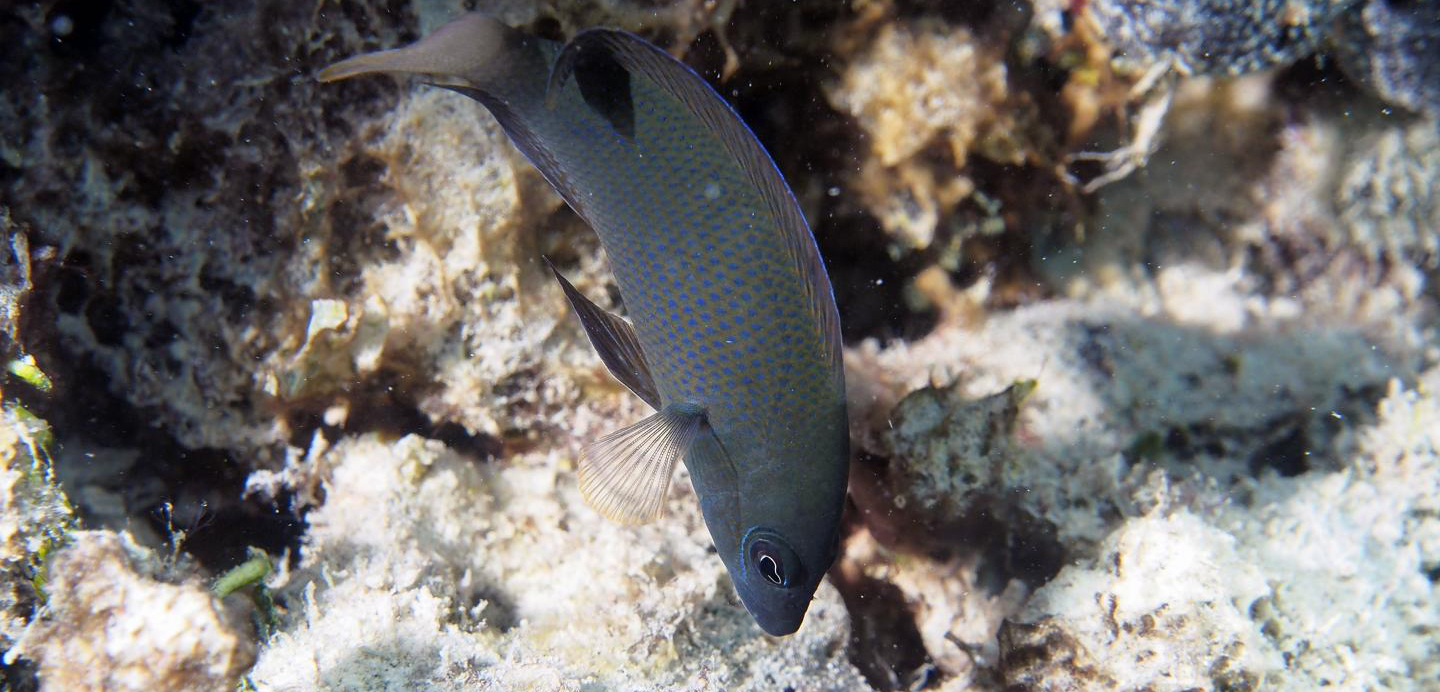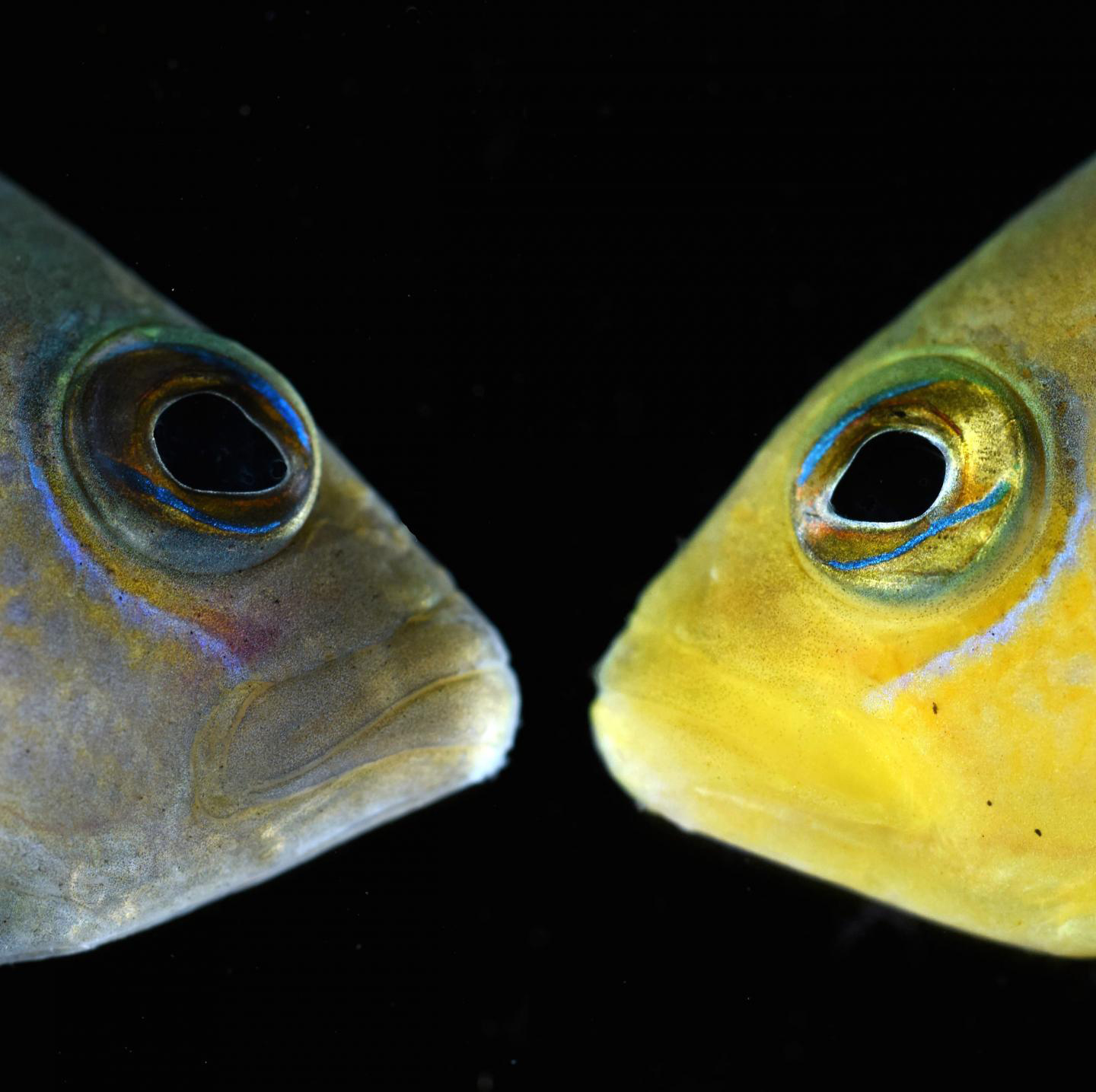Big Bad Dottybacks
Predatory fish dress like their prey.
Article body copy
In the classic fairy tale, the Big Bad Wolf dons Little Red Riding Hood’s grandmother’s clothes to fool the girl into coming close enough to eat. In the natural world, this is called aggressive mimicry.
We tend to think of mimicry as a defensive mechanism: stick bugs hide among tree branches; butterflies spook predators with wings bearing owl eyes; harmless flies deter foes by resembling deadly wasps. But mimicry also has a mean streak, and as researchers found recently, one small fish—the dusky dottyback—is an expert at playing wolf.
The dusky dottyback is a small predatory fish common on the coral reefs of the Indo-Pacific. Dottybacks come in at least five different colors: yellow, brown, pink, orange, and gray. Yet a dottyback’s coloration isn’t fixed. Researchers have watched them change from yellow to brown within two weeks of being relocated from a living reef to a patch of dark coral rubble.
At first, scientists thought that dottybacks changed color to match their surroundings. (The better to hide from predators with, my dear.) But since yellow dottybacks are usually seen on yellow coral reefs alongside yellow damselfish, and brown ones are usually seen swimming around dark coral rubble alongside brown damselfish, there could be another explanation for the chameleon-like behavior. Rather than changing color to match their surroundings, the dottybacks might be changing to match the damselfish, their favored prey.
As zoologist Fabio Cortesi and colleagues showed in an experiment, dottybacks primarily use mimicry not to hide, but to hunt.
To show the difference, the scientists built a series of artificial reefs out of either yellow coral or brown coral rubble. Stocking each of the two reef types with either yellow or brown damselfish resulted in four different environments: two where damselfish matched the coral, and two where they did not. Into each of those environments the researchers dropped either a yellow or a brown dottyback. No matter the coral’s color, the dottybacks changed to match the damselfish.
This is more than a simple case of camouflage—it’s far more insidious. Like the Big Bad Wolf in grandma’s clothes, to young damselfish the color-changed dottybacks look like one of their own—junior damselfish can’t tell the difference between harmless adult damselfish and deadly dottybacks.
But unlike for Little Red, in this nature tale there is no happy ending, no huntsman to set the damselfish free. Unaware of the danger, the young damselfish swim right into the mouth of a killer.
The end.


